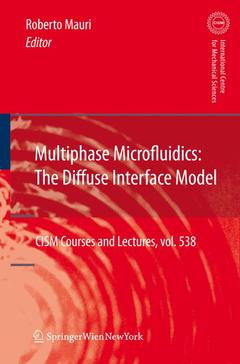Description
Multiphase Microfluidics: The Diffuse Interface Model, 2012
CISM International Centre for Mechanical Sciences Series, Vol. 538
Language: EnglishPublication date: 05-2014
176 p. · 15.5x23.5 cm · Paperback
Publication date: 04-2012
176 p. · 15.5x23.5 cm · Hardback
Description
/li>Contents
/li>Comment
/li>
Diffuse interface (D.I.) model for muliphase flows.- Phase separation of viscous ternary liquid mixtures.- Dewetting and decomposing films of simple and complex liquids.- Phase-field models.
Multiphase flows are typically described assuming that the different phases are separated by a sharp interface, with appropriate boundary conditions. This approach breaks down whenever the lengthscale of the phenomenon that is being studied is comparable with the real interface thickness, as it happens, for example, in the coalescence and breakup of bubbles and drops, the wetting and dewetting of solid surfaces and, in general, im micro-devices. The diffuse interface model resolves these problems by assuming that all quantities can vary continuously, so that interfaces have a non-zero thickness, i.e. they are "diffuse". The contributions in this book review the theory and describe some relevant applications of the diffuse interface model for one-component, two-phase fluids and for liquid binary mixtures, to model multiphase flows in confined geometries.





